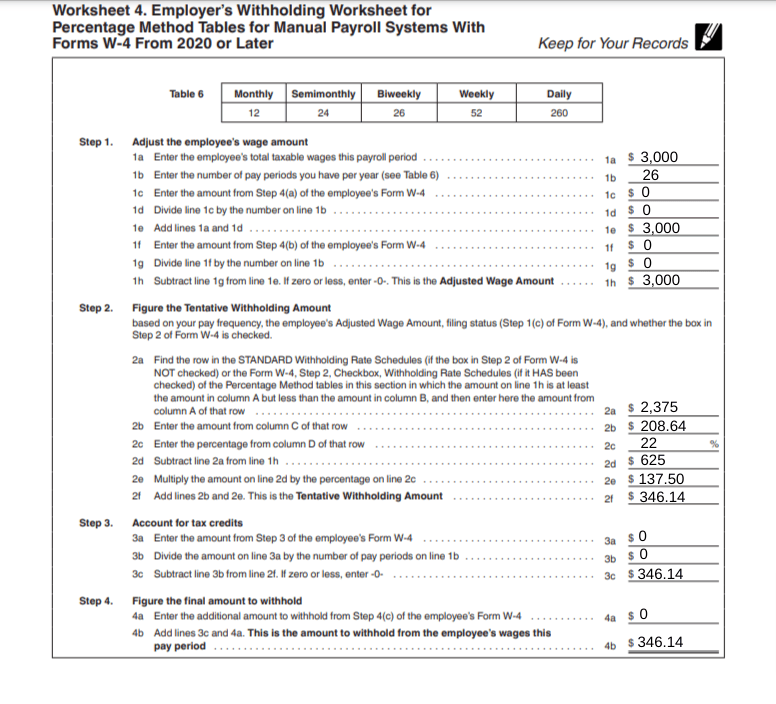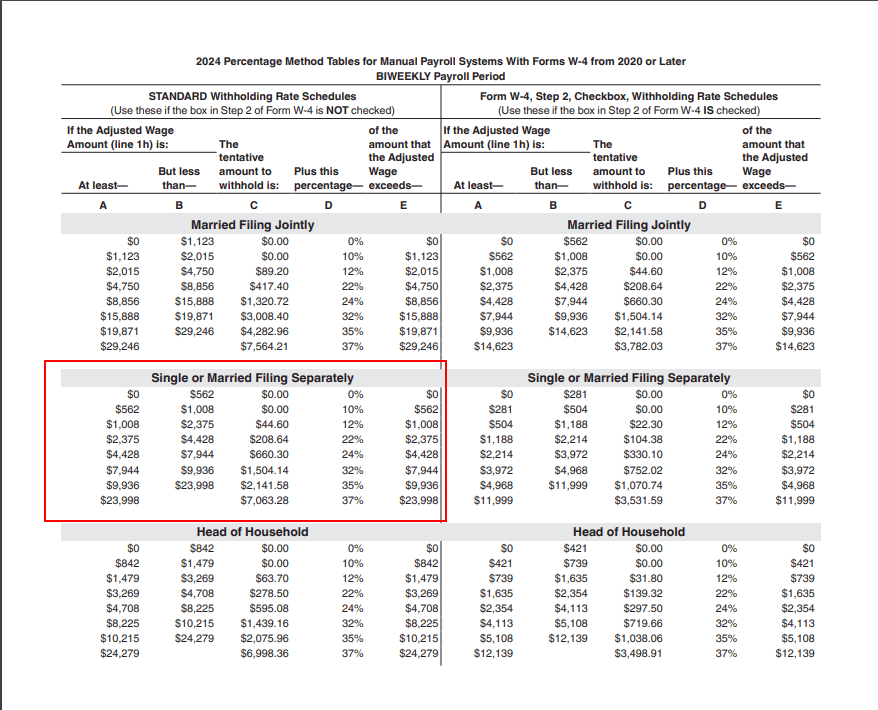
[ad_1]
When you’ve staff, payroll is certainly one of your most vital duties. As a result of payroll is oh-so-important, it’s essential know the way to calculate payroll. That features understanding the way to calculate taxes and different deductions precisely. Learn on to be taught extra about the way to calculate payroll by hand.
The best way to calculate payroll taxes: The fundamentals
Earlier than calculating payroll, it’s essential know the way a lot and the way usually you pay your staff.
For hourly staff, multiply the whole hourly charge by the variety of hours labored for the pay interval. If the worker works time beyond regulation and is nonexempt, multiply the hourly charge by 1.5 (or the speed in response to the time beyond regulation guidelines by state) to get the time beyond regulation charge. Then, multiply the time beyond regulation charge by the variety of hours the worker labored over 40 within the week. Add the worker’s complete common wages and time beyond regulation collectively (if relevant).
In case your worker is salaried, decide their annual wages and divide it by the variety of pay intervals within the 12 months (e.g., 26 pay intervals for biweekly). The quantity is the worker’s gross wages for the pay interval. For instance, if an worker makes $40,000 yearly and is paid biweekly, divide their annual wages ($40,000) by 26 to get their complete gross pay for the interval ($40,000 / 26 = $1,538.46).
Typically, there are a couple of taxes it’s essential calculate to course of payroll accurately, together with:
In some states (e.g., Pennsylvania), chances are you’ll have to calculate state unemployment taxes in your staff. Moreover, some states have state-specific taxes staff and/or employers might have to pay (e.g., Oregon transit tax).
Federal revenue tax
The IRS releases a brand new Publication 15-T annually with directions on the way to calculate federal revenue tax. The best way to calculate federal revenue tax depends upon a wide range of components, together with:
- Which model of Type W-4 you’ve on file for the worker (pre-2020 or post-2020)
- Pay frequency
- Worker’s submitting standing (e.g., single)
- If the worker has a number of jobs (i.e., the worker checked the field in Step 2 for a number of jobs)
- Dependents quantity (or withholding allowances, if utilizing the pre-2020 Type W-4)
- Deductions
- Extra withholdings
As soon as you already know your worker’s info, you should utilize Publication 15-T to find out how a lot to withhold for FIT.
Decide which calculation methodology to make use of earlier than you begin. The IRS provides two strategies: proportion and wage bracket. Publication 15-T provides each the share methodology and wage bracket methodology worksheets. Use the relevant worksheet to calculate every worker’s federal revenue tax withholding.
Social Safety tax
Social Safety tax is a payroll tax that each employers and staff contribute to equally. The overall tax quantity is 12.4%. The worker pays half (6.2%), and the employer pays the opposite half (6.2%). Cease withholding and contributing Social Safety tax after the worker earns above the Social Safety wage base.
Multiply 6.2% by the worker’s gross taxable wages for the pay interval to seek out their Social Safety tax quantity.
Medicare tax
Medicare is the opposite tax that each employers and staff contribute to. The overall tax is 2.9%, so staff pay 1.45%, and employers pay 1.45%.
Multiply the worker’s gross taxable wages by 1.45% to find out how a lot to withhold for Medicare tax. Medicare doesn’t have a wage base. Nevertheless, it’s essential withhold a further 0.9% from worker wages in the event that they earn above $200,000. Employers would not have to contribute to the extra Medicare tax quantity, however they need to proceed to contribute 1.45% every paycheck.
State revenue tax
Some states don’t have revenue tax, together with:
- Alaska
- Florida
- Nevada
- New Hampshire
- South Dakota
- Tennessee
- Texas
- Washington
- Wyoming
In case your worker works in a state with out revenue tax, don’t withhold state revenue taxes from their wages.
Some states have a flat tax charge, that means that the speed doesn’t change relying on how a lot an worker earns. These states embrace Arizona, Colorado, and Utah.
Some states have a progressive tax charge, that means that the speed will increase the extra an worker earns. These states embrace Arkansas, Hawaii, and Maine.
In case your state has a flat tax charge, multiply the tax charge by the gross taxable wages to find out the quantity of tax to withhold out of your staff’ checks.
In case your state makes use of a progressive tax charge, use the tax tables in your state’s revenue tax withholding documentation to find out how a lot SIT to withhold out of your staff.
Verify together with your state for extra info on their tax charges.
Native revenue tax
Not all states have native revenue tax, even when the state has state revenue tax. Verify together with your native authorities to find out in case your staff should pay native revenue tax.
Charges can range from locality to locality. In case your staff should pay native revenue tax, use the documentation from the native authorities to find out how a lot native revenue tax to withhold.
Different deductions to think about when calculating payroll
Typically, calculating payroll is as simple as solely figuring out the quantity of taxes to withhold. Different occasions, you’ve worker deductions to calculate, too. There are two forms of tax deductions to think about when calculating payroll:
Pre-tax deductions
Pre-tax deductions are what they sound like: the deduction comes out of an worker’s wages earlier than you calculate the taxes. A pre-tax deduction is tax-free and reduces the taxable revenue for an worker’s federal, state, and native taxes, together with:
- Federal revenue taxes
- FICA (Social Safety and Medicare taxes)
- State revenue taxes, if relevant
- Native revenue taxes, if relevant
Sadly, not all pre-tax deductions are so easy. For instance, a 401(ok) is a pre-tax deduction for federal revenue taxes however not for Social Safety and Medicare taxes. So, you’d solely subtract the price of the deduction from the worker’s gross wages to calculate FIT. To calculate Social Safety and Medicare taxes, you wouldn’t subtract the quantity of the deduction.
Put up-tax deductions
Put up-tax deductions are a bit less complicated to calculate. Subtract the deduction from the wages after you calculate and deduct all the payroll taxes.
Payroll how-to instance
Your worker, Bob, earns a biweekly wage of $3,000. He makes use of the new Type W-4 and is single with no dependents or deductions. He didn’t test the field for a number of jobs. And he doesn’t have further withholdings, different tax deductions, or pre- or post-tax deductions. Bob lives and works in Texas, so he doesn’t have state or native revenue taxes.
Utilizing Publication 15-T, you resolve to make use of the share methodology to calculate Bob’s federal revenue tax withholding. Full Worksheet 4 for the share methodology tables. You do payroll manually, so you could use the share methodology tables for guide payroll methods with Types W-4 from 2020 or later.

Right here is Bob’s info utilizing Worksheet 4 for Proportion Technique Tables for Handbook Payroll Programs With Types W-4 From 2020 or Later:
- $3,000 per payroll interval
- 26 pay intervals within the years (biweekly)
Bob makes use of the 2024 Type W-4. Full the part for this model of the shape:
- Enter “0” on line 1c as a result of Bob doesn’t declare different revenue (not from jobs).
- Enter “0” on line 1f as a result of Bob doesn’t declare different deductions.
- Bob didn’t test the field for a number of jobs and is submitting as single.
- Bob’s Adjusted Wage Quantity is $3,000, the identical as his complete taxable wages per payroll interval.
You will need to now calculate the tentative withholding quantity for Bob’s wages. Use the share methodology tables for biweekly payroll. The left facet of the desk applies to staff who didn’t test the field on Step 2 of Type W-4.

To calculate Bob’s FIT, use the world outlined in pink. Use the part for Single or Married Submitting Individually to find out the tentative withholding quantities:
- Bob’s biweekly pay is $3,000, which is larger than $2,375 and fewer than $4,428. Enter $2,375 on line 2a.
- Column C is $208.64. Enter this quantity on line 2b of Worksheet 4.
- Column D’s proportion is 22%. Enter 22% on line 2c.
- Subtract $2,375 from $3,000 to get $625. Enter $625 on line 2nd.
- Multiply $625 by 22% to get $137.50. Enter this quantity on line 2e.
- Add collectively $208.64 and $137.50 to get $346.14. Enter $346.14 on line 2f.
Then, account for the tax credit listed on Bob’s Type W-4. Bob doesn’t have any dependents, so enter a 0 on strains 3a and 3b on Worksheet 4.
Bob additionally doesn’t listing further withholdings on his W-4 type. Enter a 0 on line 4a.
The overall quantity of FIT to withhold from every of Bob’s paychecks stays $346.14.
Calculating different taxes and web revenue
Calculating Social Safety and Medicare tax is way less complicated than calculating FIT. Merely multiply $3,000 by 6.2% to find out how a lot Social Safety tax to withhold ($3,000 X 6.2% = $186). Withhold $186 from every of Bob’s paychecks (until he hits the SS wage base).
Multiply $3,000 by 1.45% to find out how a lot Medicare tax to withhold ($3,000 X 1.45% = $43.50).
As a result of Bob doesn’t have state or native revenue taxes, now you can subtract the tax withholdings from the gross revenue to find out Bob’s web revenue (aka take-home pay):
Gross Pay – FIT – SS Tax – Medicare Tax = Web Revenue
$3,000 – $346.14 – $186 – $43.50 = $2,424.36
Bob’s web revenue is $2,424.36.
Double-check your work
Earlier than you rush off to begin writing paychecks, test and double-check your work. You should utilize completely different calculators to verify your math is correct. Usually known as a paycheck calculator, paycheck tax calculator, payroll calculator, or payroll tax calculator, these instruments can help you in checking your work.
Or, make it simple by utilizing payroll software program that has the tax charges and your worker’s Type W-4 info entered. Payroll software program does all the calculations for you, together with FIT, SIT, Social Safety, and Medicare taxes. And, most software program additionally calculates further state payroll taxes.
This text has been up to date from its unique publication date of January 3, 2022.
This isn’t supposed as authorized recommendation; for extra info, please click on right here.
[ad_2]